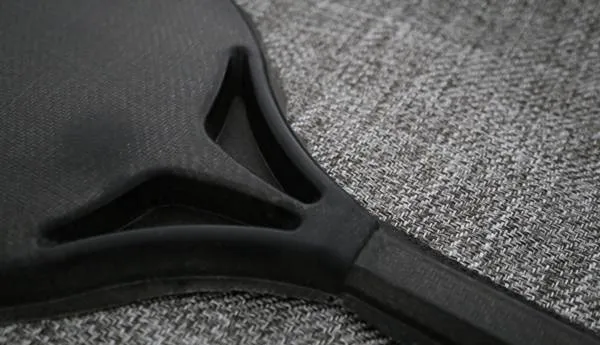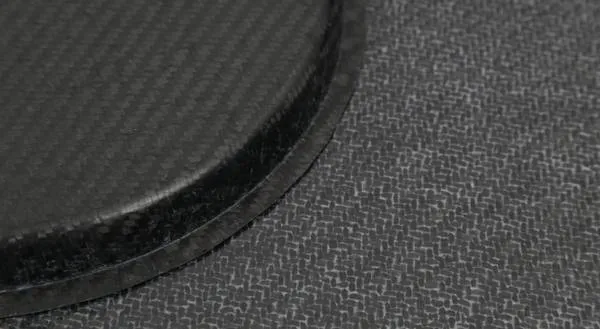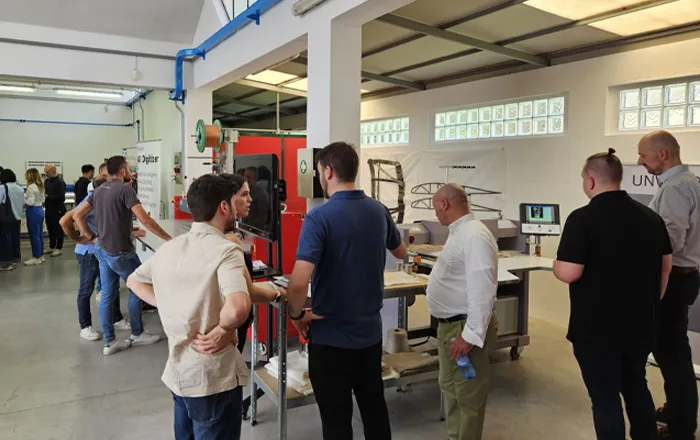How Blackfabric Incorporates Thermoplastic Resin into Fabrics?
Differing from conventional thermosetting resins, thermoplastic polymers possess an exceptional property: they can be reheated and reshaped without compromising their inherent characteristics. This breakthrough opens the door to easier repairs and recycling, marking a significant step toward sustainability and versatility in composite materials.
At the core of this innovation lies the integration of thermoplastic resins into the fabric itself, streamlining the thermal consolidation process without necessitating additional steps. In this blog post, you can explore Blackfabric’s techniques for introducing thermoplastic materials into their fabrics, resulting in thermoplastic prepregs (comprising a polymer matrix and reinforcing fibers).
COMINGLED FIBER TECHNOLOGY
In the yarn manufacturing process, two fibers are blended: the reinforcing fiber (e.g., carbon fiber, glass fiber) and a thermoplastic matrix in filament format (e.g., Polyamide, polypropylene, polycarbonate). Achieving an intimate blend of fiber and matrix from the yarn to the final product. Thanks to hybridization technology, you can maintain the desired fiber-to-resin ratio, which remains constant throughout the composite, ensuring ideal controlled impregnation. This eliminates the need for separate impregnation steps, significantly reducing processing time. The most distinctive feature of comingled fabrics is their flexibility and adaptability to complex geometries, resembling conventional fabrics.
LAMINATED FABRICS
Another method of introducing the polymer is through the lamination of thermoplastic films on the surface of our fabrics. This is a process that Blackfabric can internally perform in its bonding plant. Using a calendaring process, heat is applied to slightly melt the film, causing it to adhere and laminate to the fabric’s surface. During the thermoforming of the final part, the required temperature and pressure are applied to completely melt the polymer, ensuring full impregnation. With this lamination technique, you can achieve traditional carbon-like surface finishes. Unlike thermoset prepregs, these can be stored at room temperature without degradation, without require refrigeration for transportation and storage.
TAPES
Blackfabric possesses specialized machinery capable of weaving flat tapes up to 20mm wide. These tapes are fully impregnated, already incorporating the desired fiber-to-resin ratio. Starting from spread-tows or slit-tapes, this results in spectacular surface finishes. Visually, you get a large weave pattern with very flat and ripple-free fibers, optimizing mechanical properties and reducing weight. They are woven to provide consistent properties in both 0/90 directions, and fabric widths of up to 200cm can be achieved if needed, resulting in fabrics with a distinct aesthetic and superior quality finish.
In the ever-evolving world of carbon fiber composites, the utilization of thermoplastic prepregs represents a significant milestone. The combination of strength, adaptability, and eco-friendliness ushers in a new era in materials engineering.
For those interested in staying updated on the latest developments in composite materials technology, Blackfabric extends an invitation to explore the myriad possibilities offered by its products.











